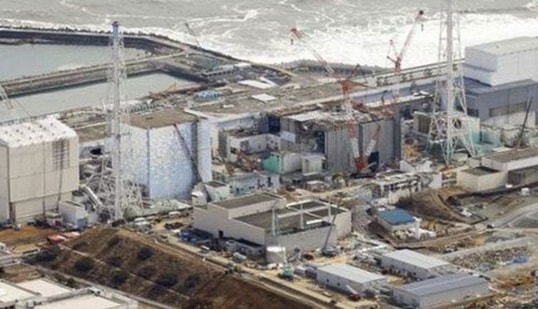For the first time, seaborne radiation from Japan’s 2011 Fukushima nuclear disaster has been detected in a Canadian salmon, according to a report from the InFORM coastal network that monitors marine radioactivity off BC.
The single sockeye salmon contained a miniscule amount of cesium-134, the “fingerprint” isotope from Fukushima. The salmon was collected in Okanagan Lake in summer 2015 and was one of eight fish out of a total of 156 that tested positive for trace levels of cesium-137, also a manmade isotope, but not necessarily from Fukushima.
“With its roughly 30-year half-life, cesium-137 is still present in the environment from 20th-century nuclear weapons testing and Chernobyl, in addition to Fukushima,” said UVic chemical oceanographer Jay Cullen.
The team did more intense analysis to determine if the telltale cesium-134 was also present.
“We took these same eight fish and measured them for 60 times as long as we normally do to look for the Fukushima fingerprint,” said Cullen.
“This is analogous to cupping your hand behind your ear to pick up a whisper from across the room.”
The level of cesium-134 in the one salmon was 10,000 times lower than Health Canada safety guidelines, which is nowhere near a significant risk to consumers.
“For perspective, you would need to eat 1,000 to 1,500 kg of salmon with this level of contamination in a short period of time to increase your radiation dose by the same amount as a single five-hour cross-country airplane flight,” said Cullen.
Testing in 2016 discovered one sockeye salmon from Sproat Lake on Vancouver Island with a “minimum detectable concentration” of cesium-137. Further testing is being done to determine whether it’s traceable to Fukushima.
The radiation plume from Fukushima has spread throughout the northeast Pacific from Alaska to California with maximum levels of contamination expected nearshore this year and next.
The InFORM network involves scientists in Canada and the US, health experts, non-governmental organizations—and citizen scientists along the BC coast who assist with the monthly collection of water, and annual collection of fish and shellfish samples for analysis.
The samples supplement measurements taken offshore by Fisheries and Oceans Canada and a citizen scientist network coordinated by Woods Hole Oceanographic Institution that extends from the Bering Strait to San Diego.
“As the highest concentrations from this plume arrive in the next few years, we’ll continue to monitor radioisotope levels and what kind of risks they pose,” said Cullen. “Levels measured now and predicted at their peak are unlikely to represent a significant health risk to the marine ecosystem or public health in BC.”
InFORM is funded by the Marine Environmental Observation Prediction and Response Network. For more information, visit fukushimainform.ca
